Making the Mix Room: Sondhus Builds Private Studio for Paul Savoy of A-ha
The last time we talked to songwriter Paul Waaktaar-Savoy, he was working out of his own studio in SoHo, prolific as ever after having completed a farewell tour for his mega-platinum band A-ha a couple of years prior.
Today, he is back with a new studio and a new album with A-ha—the band’s 10th studio full-length.
A good portion of Savoy’s work is now being completed in this new space, recently designed and built by Jim Keller of Sondhus. It features a Roots console by Tree Audio and an extremely elegant and effective minimalist design, rich with wood surfaces and open spaces.
The Band
Though most Americans will be familiar with Savoy’s from his 1980s hits with A-ha (“Take on Me” and the theme to the James Bond film Living Daylights to name just two) the reality is that A-ha has never really left the charts for long throughout Europe.
In 2000, their sixth album, Minor Earth Major Sky, hit number-one hit in Savoy’s native Norway. In 2005, their eighth album, Analogue, was certified Silver in the UK. And as recently as 2009, their ninth album, Foot of the Mountain, entered the top 5 in the UK charts, and went Platinum in Germany.
Some estimates put A-ha among the top 50 grossing live acts in world. And to date, the band has sold more than 80 million copies in total. As of press time, Savoy is on the road once again, supporting A-ha’s most recent release overseas.
The Vision
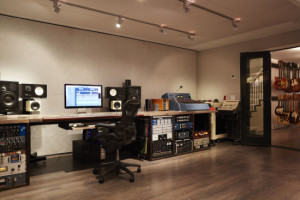
A view of the studio’s workstation. Full resolution images can be found in the gallery at the end of this post.
I asked Savoy what he wanted most out of this new studio, located in the basement of his Park Slope home.
“I wanted to build a place that actually sounded accurate,” he said. “That was the big dream. And to be able crank it up and for things to have some life.”
In between studios, he worked out of a simple rented space for almost a year while this new “dream” studio was being built.
“That was a struggle—not so much for me, but for the engineer I worked with. With that room, I think he was starting to lose faith in his own abilities! Sometimes you can get good sounds out of a space you throw together, but the monitoring, that’s the nightmare.”
This new space, though beautifully detailed, is also decidedly more spare than his old SoHo studio.
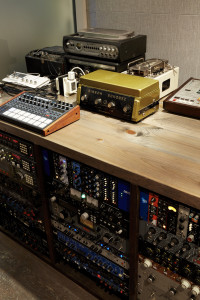
Though Savoy has pared down his collection dramatically, 96RU worth of rack gear, a select handful of synths, and a small army of effect pedals are still within arm’s reach.
“With the Soho place, we took things up to a level where you couldn’t even think anymore, with gear up to the ceiling. I think I’ve sold 20 keyboards since then. It was filled to the brim. You’d walk into the room and it was just [overwhelming.]
“It was important for me to simplify with this place, and it was very important to me to have walking space. I just wanted to get rid of everything just so I could think straight. Of course I do sometimes regret selling some of those old beautiful vintage synths because I know I’ll never find them again.
“But when you write songs, you can can lure yourself into the gear the thought that ‘If I just get this, I’ll write these great songs.’ That old ploy. It worked on my wife, and I think I was able to trick myself too for a while too,” he laughs.
Though Savoy’s room is still laden with enough gear to make many studio owners jealous, it easily avoids feeling overstuffed of gear-focused. Sitting in the room feels almost like having a fine Brooklyn restaurant all to yourself, with equal notes of rustic homeyness and sleek sophistication in play.
More details on the sound and design of the space, from Jim Keller of Sondhus, can be found below. At the end, check out the photo gallery of hi-res images:
Location
Park Slope, Brooklyn, NY
Isolation
The concept was to build a room that sounds accurate and isolated, yet is cohesive with the design of the rest of the house.
We started with creating the “shell” of the room to isolate it from the rest of the home. The ceiling is decoupled from the beams using isolation clip hangers and C-channels. The ceiling and wall assemblies consist of multiple layers of sheetrock and QuietGlue.
The walls are also decoupled from the rest of the house in order to reduce sound transfer in and out of the studio. Since the studio is in the basement however, the wood floor can sit on the foundation slab and no additional isolation was necessary there.
Acoustic Treatment
There is quite a bit of acoustic treatment in the room, yet it is all mostly hidden from view. Most of the wall and ceiling surfaces are finished in custom fabrics chosen to match the décor of the room.
Since we worked with fairly limiting room ratios and geometry—it wasn’t an option to build a room that would look out-of-context with the rest of the house—we had to do quite a bit work on smoothing out the low end.
Buried in the rear wall are panel membranes that are tuned to the fundamental resonant frequency of the room. These span the entire width and height of the back wall, and are responsible for balancing out the low-end energy in the room. In front of these membranes are several more layers of different materials designed to either absorb or diffuse a variety of frequencies.
The rear wall treatment is finally covered by fabric, followed by pine boards (of varying widths) finished to match the custom desktop and floating guitar pedal shelves. The soffit along the ceiling on this rear wall offers some additional low-end trapping, as it is filled with absorptive material and finished in fabric.
The rock wall behind the guitar pedal shelves offers a bit of high-end diffusion. This gives some energy back into the room to keep it from getting to “dry”. It also breaks up the materials in the room, visually.
We made the shelves hollow, which allowed us to hide all of the wiring for the lights and pedals out-of-view. We made custom length cables for each pedal so that the wiring on the surface of each shelf was as clean as possible. The pedals are all run through a switcher so they can be engaged or hard-bypassed. There is a tie line on the back wall that allows input and output patching to and from each shelf.
The front wall is quite different—a combination of absorption and diffusion. This wall is about five inches deep and is covered in a textile stretched on-site with the use of a fabric track system. The ceiling and sidewall is mostly absorptive and also employs a fabric track system for the textile covering.
Work Surfaces
Paul has such a nice collection of outboard gear. We designed and built a really huge desk, about 18 feet wide, with a total of 96U of rack space and a large work surface area.
The desktop is finished to match the rear-wall pine and floating guitar pedal shelves we custom built for the space.
The racks under the desktop, as well as the custom synthesizer tables we built, are charred and oiled, a Japanese wood finishing technique called “shou sugi ban”. Three Avid Artist Mix control surfaces are flush-mounted into the desktop, with an oil-tanned leather armrest to finish it off.
Finally, we utilized the adjacent storage space as a live reverb chamber, with tie lines to and from the patchbay. Since my days of being on staff as an engineer at Avatar Studios, I’ve really favored the sound of live reverb chambers. In these days when nearly everybody can get their hands on the same plug-ins, it’s really great to have your own sort of signature reverb.
Choice Gear
Console/Control Surface:
The Roots by Tree Audio
Thermionic Culture Fat Bustard
AVID Artist Mix (three, flush mounted into the custom desk)
Monitors:
Dynaudio, NS10 and Avantones.
Outboard/Hardware/Tape
For outboard gear, there is pretty much one every “staple” of recording. But of note are the Fairchild 670, EMI Mic pre’s and EQ, V76 and V72 mic pre’s and a nice assortment of Neve pre’s (1073’s, 1081’s) and compressors (2254’s)
Since Paul has a vast synth and drum machine collection, Expert Sleepers does a good job of keeping it all in sync (I should note that Chuck Zwicky set up the Expert Sleepers side of things and Phil Abbott was a great help during the build out of the room.)
Secret Weapons
Two Studio-88 modular systems from synthesizers.com.
Tune Up
We took frequency response measurements of the shell of the room before we started adding the acoustic treatment. From there, we ran sweeps at a few different times during the build to ensure that we stayed on track. Final design and tuning was done by ear.
Click below for full resolution images:
Please note: When you buy products through links on this page, we may earn an affiliate commission.







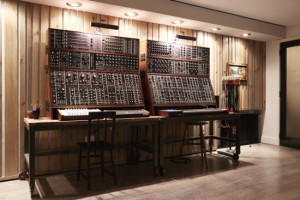
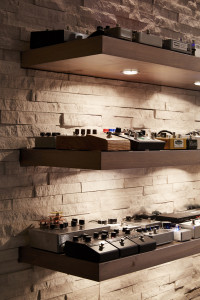
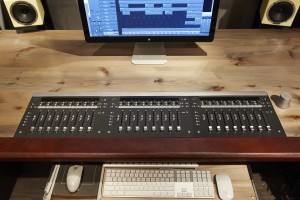
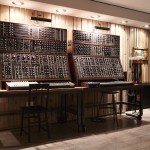
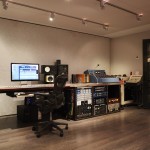
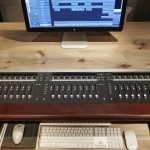
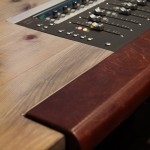





AntoniusBlocked
July 4, 2015 at 11:40 am (10 years ago)Such a talented lyricist and musician. Easily one of the best of his generation. Can’t wait to hear the new albums from a-ha, Waaktaar and Savoy.